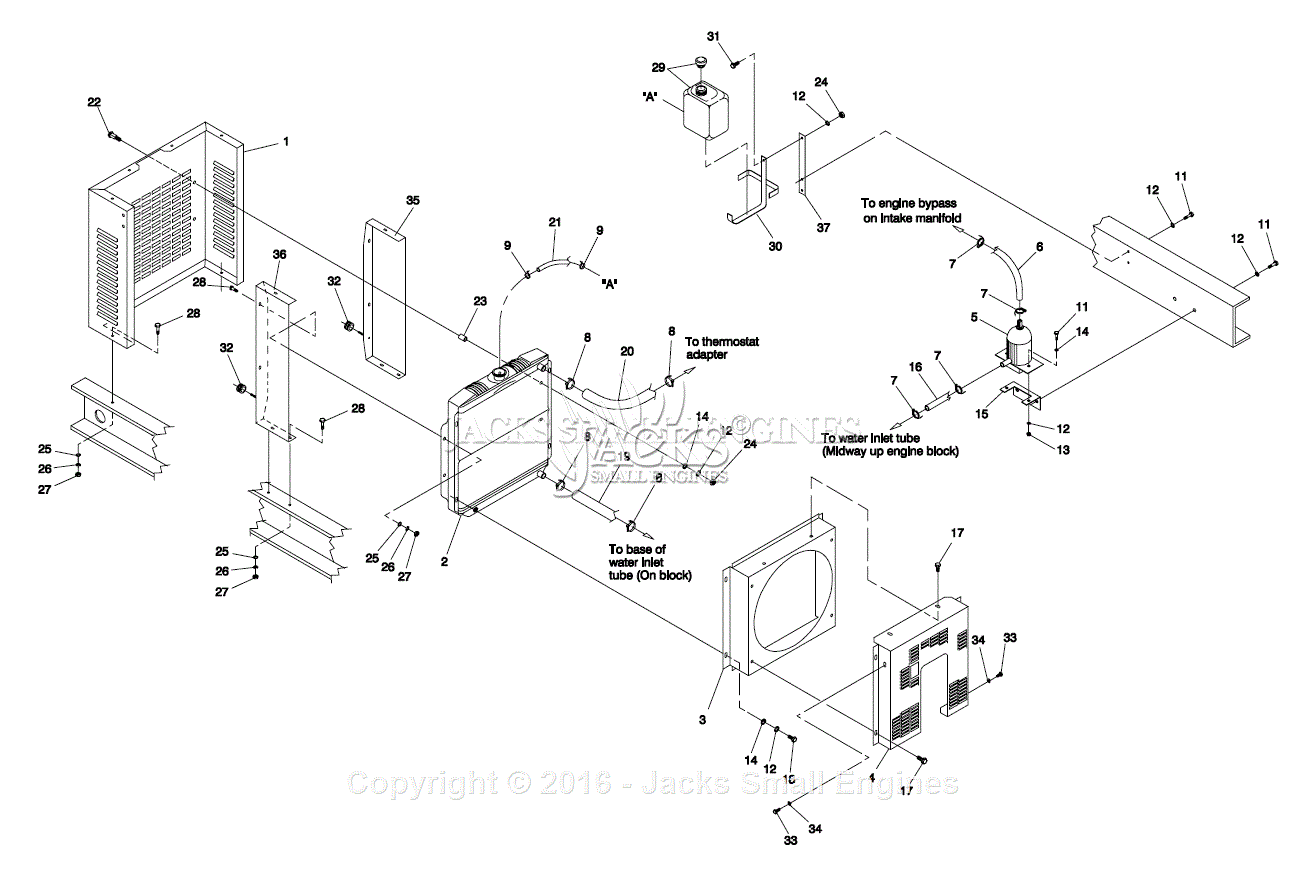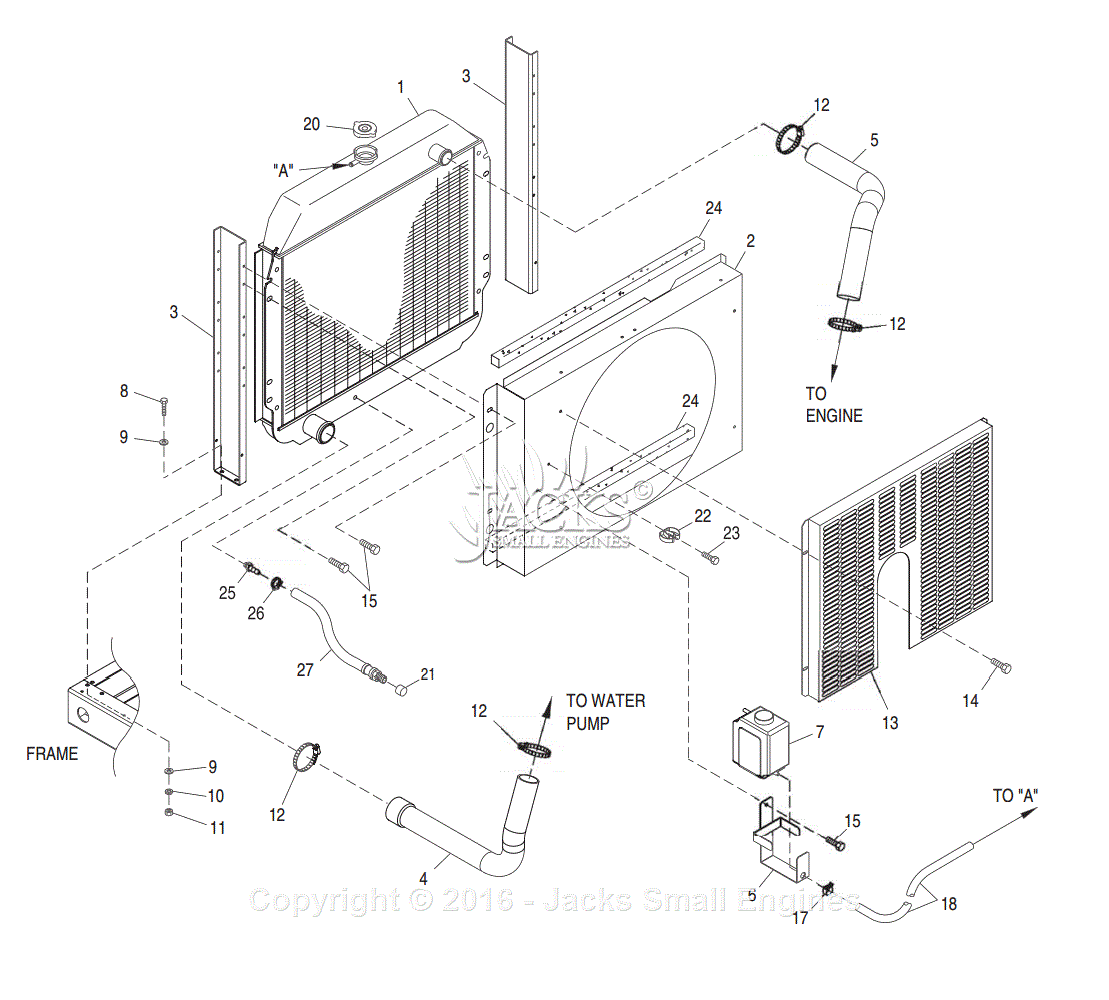39 parts of a radiator diagram
Understanding Radiators and Valves - Mr Central Heating TBOE stands for Top and Bottom Opposite Ends, and this as the name suggest means the valves attach at the top and bottom of the radiator at opposite ends. Whereas, TBSE means Top and Bottom Same ends, meaning that both pipes enter on one side of the radiator. 30 Basic Parts of a Car Explain with Name & Diagram ... Car Parts Diagram Explained - Steering wheel: You use this to steer the car (control its direction), Speedometer: The speedometer shows how fast you are driving, Seat belt, Gear shift, Windshield/Windshield wipers, Headlights, Taillights/Turn signal, Hood/Engine.. Parts of a Car. Let's Discuss one by one part of a car: 1. Steering wheel. You use the steering wheel to control the direction ...
10 Cooling System Parts And Function (With Pictures ... In a radiator will be encountered some parts like Upper tank, is a tank to hold hot water or coolant from the engine. Lower tank, is a tank to hold coolant that has been cooled and ready to be sent back to the engine. The radiator core, is a flat-shaped channel that connects upper tank and lower tank space.

Parts of a radiator diagram
Parts of a Home Radiator - Hunker A bleeding valve allows air to exit the fins in a hot water system. These valves can be manual or automatic and are located near the top of the radiator fins. Lockshield valves are located at the bottom of the radiator just above the supply pipe. They help make sure each radiator in your home heats up at roughly the same time. PDF UNDERSTANDING CENTRAL HEATING SYSTEMS Dec13 Other components of the central heating system 1. Heating emitters - radiators The radiator is the most common way of heating your home. There are many types of radiator, many are made from copper or aluminium but most are made from steel. A radiator works by transferring heat to the air in the room as it passes over the radiator panel. Radiator cap: definition, functions, components, working ... The pressure cap is an important component of the proper working of an engine. it should be periodically inspected and consider a replacement if it fails. Ensure 5o/5o water and anti-freeze agent is used. The components of a radiator pressure cap consist of shaped tin metal sheet at the top.
Parts of a radiator diagram. PDF Suggested Electric Fan Wiring Diagrams - DaveBarton.com Suggested Electric Fan Wiring Diagrams PAGE 1 These diagrams show the use of relays, ON/OFF sensors, ON/OFF switches and ON/OFF fan controllers. ... IN RADIATOR COOLANT OR OPTIONAL ADJUSTABLE FAN SWITCH WITH RADIATOR PROBE (GROUND SWITCHING, NON- ... PART OF RADIATOR MAIN RELAYS TURN ON FANS WHEN TEMP SENSOR IS ACTIVATED 12V SWITCHED WIRE. What is radiator: Types of Radiator and Its Working Principle Construction of Radiator It consists of an upper tank and a lower tank and between them a core. The upper tank is connected to the water outlet or outlets from the engine jacket by a hose pipe, and The lower tank is connected to the jacket inlet through the water pump. The core is a radiating element, which cools the water. Steam Heat Radiator Pipe Connections & Types Definitions ... Guide to steam heat radiator piping connections: this article describes the piping connections for steam heating radiators. We explain the difference between one pipe and two pipe steam heating systems. We illustrate upfeed steam pipes, downfeed steam pipes, and we make clear how to figure out what type of steam heat is installed in a building - insofar as the steam heat distribution is concerned. Core Principles Of One-Pipe Steam Radiators - Castrads The heat from a single-pipe steam radiator is controlled by restricting the air that can exit. A one-pipe steam radiator valve should be fully open or fully closed, never in between. Steam vents allow air to escape from the radiator but shut automatically when the radiator is full of steam. An air vent uses two mechanisms.
Radiator: definition, functions, parts, diagram, working ... It's located in the radiator head which is made of metal or plastic. From the engine, hot coolant flows through the inlet portion to radiator and from the outer portion to the engine. The hose is used to make the connections. Cooler: Some cars use the same cooler as the engine transmission cooler. PDF An Introduction to RadiatorsAn Introduction to Radiators In this approach, shown in the diagram below, water flows from radiator to radiator and then back to the boiler. However, as the water flows into each radiator, heat is drawn from it and therefore the water, which re-enters the flow pipe, is slightly cooler. Indeed, towards the end of the run the radiators are significantly cooler. Basic water central heating - radiator pipework Special radiator fitting may be used so that both the feed and return micro bore pipes are connected to the same end of each radiator (as upper 2 radiators in the illustration). Alternatively, the pipework may feed into into the two ends of the radiators (as lower 2 radiators in the illustration). Water Cooling - Parts, Working, diagram, Advantages and ... This type of pump consists of the following parts: (i) body or casing, (ii) impeller (rotor), (iii) shaft, (iv) bearings, or bush, (v) water pump seal and (vi) pulley. The bottom of the radiator is connected to the suction side of the pump. The power is transmitted to the pump spindle from a pulley mounted at the end of the crankshaft.
Replacement Engine Cooling Parts | Radiators, Fans, Pumps ... The Cooling Fan Assembly is an essential part of a vehicle's cooling system. It must complement the rest of the cooling system by efficiently cooling the radiator and/or condenser. A failure in... OE quality at an affordable price Direct replacement. $45.51 - $614.59. Gates® Standard Engine Water Pump. 10. Central heating diagram - Mike the Boilerman The two valves in the flow to the cylinder and radiators in this diagram would be the motorised valves controlled by the cylinder and room thermostats. Semi Gravity with thermostatic zone control. I've robbed this diagram from the Honeywell "Sundial C Plan" installation instructions. Parts of Car Diagram | MOOG Parts The engine block features parts such as the timing chain, camshaft, crankshaft, spark plugs, cylinder heads, valves and pistons. Transmission The transmission is a gearbox filled with gears and gear trains that makes effective use of the engine's torque to change the gears and power the vehicle. Battery Car Radiator Diagram | Buy Auto Parts It consists of a pressure relief valve and spring that will allow for overflow from the radiator to be transferred to the overflow tank. The following diagram shows the detailed cut out of the radiator. Over time, the radiator may go bad, causing the engine to overheat. This is one of the most common symptoms of a faulty radiator.
Radiator - Fix That Ford!, Tractor parts for antique Ford ... Radiator and related parts diagram for Ford 8N Tractors. 1947-1952. Ref # Ford Part Number *Links provided for available parts: Part Name: 8005: 8N8005: Radiator Assy. 8032: 2N8032: Pad (radiator filler neck) 8033: 8N8033A: Bumper (radiator grille to hood) 8100: 2N8100A: Cap Assy. (radiator pressure) 8115: 9N8115B: Cock Assy. (radiator drain ...
Mercedes-Benz Radiator & Cooling Parts - mercedesoem.parts No results found for " radiator, radiator hose, radiator cap ".Here are some helpful search tips: Search by a part name. Example: water pump. Be less specific. Example: brake instead of ceramic brake. Remove information such as make, year or model.
Radiator cap: definition, functions, components, working ... The pressure cap is an important component of the proper working of an engine. it should be periodically inspected and consider a replacement if it fails. Ensure 5o/5o water and anti-freeze agent is used. The components of a radiator pressure cap consist of shaped tin metal sheet at the top.
PDF UNDERSTANDING CENTRAL HEATING SYSTEMS Dec13 Other components of the central heating system 1. Heating emitters - radiators The radiator is the most common way of heating your home. There are many types of radiator, many are made from copper or aluminium but most are made from steel. A radiator works by transferring heat to the air in the room as it passes over the radiator panel.
Parts of a Home Radiator - Hunker A bleeding valve allows air to exit the fins in a hot water system. These valves can be manual or automatic and are located near the top of the radiator fins. Lockshield valves are located at the bottom of the radiator just above the supply pipe. They help make sure each radiator in your home heats up at roughly the same time.


































0 Response to "39 parts of a radiator diagram"
Post a Comment